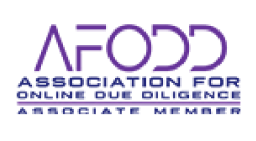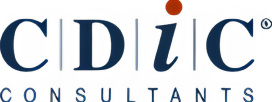The benefits of structured and well-designed corporate volunteering during COVID are clearly established: boosted productivity, increased employee engagement, improved hiring, and retention. As leaders seek to re-engage their staff in a “new normal” work environment, COVID-safe volunteer programs can give your company the boost that it needs.
While current corporate philanthropy and volunteering during COVID rates typically vary from country to country and fluctuate with economic peaks and troughs – one thing that remains the same across the board is the positive flow-on effects from such programs.
In Singapore, for example, a pre-pandemic study showed that 66 per cent of companies that were actively engaged in volunteerism were motivated by the positive knock-on effects including improved staff morale and employee engagement, positive leadership development and staff retention. However, where businesses can sometimes go wrong with their volunteer programs is with design. Corporate volunteer programs often tend to reflect the personal priorities of top management. But what matters to executives doesn’t necessarily matter to employees; positive flow-on effects will only be seen if employees are engaged.
The key to successful corporate volunteering during COVID is in the design. Companies should prioritise meaning, balance top-down structure with bottom-up passion and in the current environment, programs should also be COVID-safe.
Here are three best practices for designing and implementing volunteering during COVID that work:
1. Prioritise the meaning and purpose of the program.
Employees must see volunteering during COVID experiences as meaningful for them to want to participate actively in the first place. In companies that offer volunteer programs, employee loyalty typically increases for those who volunteered but also for those who didn’t. So how can you ensure volunteer opportunities are meaningful for your team?
People derive meaning when they see purpose and value in what they are doing. Ensuring that employees can see the direct benefit of their efforts is key to a well-designed and effective program. An example of a company getting it right is the Singaporean firm Feng Ming Construction. After realising the limitations of conventional “cheque-book philanthropy”, Feng Ming shifted to volunteering with the non-profit Asian Women’s Welfare Association (AWWA) to renovate homes for families-in-need. The project is more effective than giving the charity cash to hire a sub-contractor by relying on in-house expertise. Feng Ming reaps the benefit of motivated employees who have a meaningful volunteer experience and feel proud to use their technical skills in meaningful work.
2. Balance employee passion with company objectives.
When deciding whether to structure a volunteering program or take a more laissez-faire approach, leaders face a trade-off. Employees are engaged and interested when they make choices for themselves and focus on projects that personally appeal to them. Yet structured, coordinated programs are more likely to encourage employee interaction and shared experiences, increasing morale and improving teamwork.
There are several ways to achieve the right balance. One is to create corporate volunteering during COVID from the bottom up by giving employees an active role in shaping its focus and features. Adopting a bottom-up approach, homewares company Crate and Barrel responded to employees’ desires to alleviate food waste. By partnering with the Singapore food charity community, Food from the Heart, Crate and Barrel staff help organise food donation drives, and sort and pack food for distribution under the food charity’s Community Food Pack program. The annual event is a highlight for employees, and there is a “buzz amongst staff for months afterwards”. It also has a positive impact on customer perceptions of the brand, as shown by the number of donations received. By responding to employee passion, Crate and Barrel struck the right balance between company objectives and staff interests.
3. Make it accessible and COVID-safe.
Amid the current COVID-19 pandemic, it has been difficult for leaders to put meaningful volunteering during COVID into practice. In response to the challenges of social distancing and working from home, some volunteer organisations have designed virtual volunteering during COVID opportunities that allow companies to continue with volunteer programs that build engagement.
Social enterprise Impact provides pro bono professional services to non-profits and social enterprises to help build their volunteering programs. Since COVID, they’ve adapted their offering to include a Virtual Volunteering program.
Under the Virtual Volunteering program, corporate sector volunteers put their skills to the test and sit down 1:1 (virtually) with social enterprises to solve their most pressing business challenges. Despite the lack of physical interaction, the meaning gained from volunteers has been significant. As a recent program participant from Red Hat Software put it: “COVID-19 has had a serious impact on the social sector in Singapore. I had the opportunity to make a small yet meaningful difference by sharing my professional knowledge. Being able to give back is personally rewarding.”
In summary
Corporate volunteering during COVID can unlock substantial intangible value for companies while benefiting important social and environmental causes. Like anything else in business, however, reaping such powerful rewards requires thoughtful planning and consideration. Prioritise meaning, tap into your employees’ passions and make programs COVID-safe to boost engagement.







